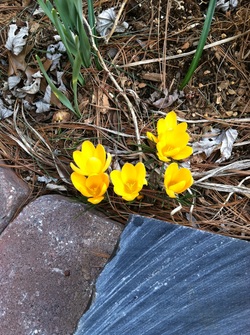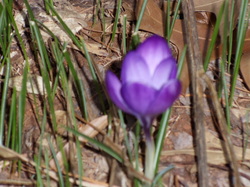
mad.
mountains, mud from the Shenandoah, pH neutral, not a simple product and no doubt reasonably bacterial and fungoid to a limited extent, but containing no fauna visible to the naked eye. This comes by truck and gets dumped in holes.
Then there is the mud of established beds. This dirt has some local history. Obviously some of it was once Julius Caesar and a lot of it was mastodon dung, back in the day, but we also find the remains of the charcoal briquets from the great 4th of July grill-out of 2011, and fireplace ashes, areas of decayed peat moss, the relics of former mulches, flowerpot shards, a lost marble, and of course worms, bugs, aerated holes, strands of vegetal and fungal life, and invisible bacteria; this stuff’s as alive as any great city, and the rains of autumn turn it not so much into the slimy mud of lore and legend as into something a little like chocolate cake. The beds are man-made. They’re part midden, and if no one feeds them, it’s hard to imagine how such beds would form. They look natural, they smell natural, and they’re full of organisms. When you find this stuff, it’s evidence by itself that humans are close by, using tools.

metamorphosis. But it’s not perfect for worms and you wonder what they think they are doing. Are these bitter worms, worms in denial, outcasts, just lost worms; or are they pioneers, explorers, visionaries?
One would like to interrogate these worms. They are either much stupider or much more ambitious than the usual sort.

 RSS Feed
RSS Feed